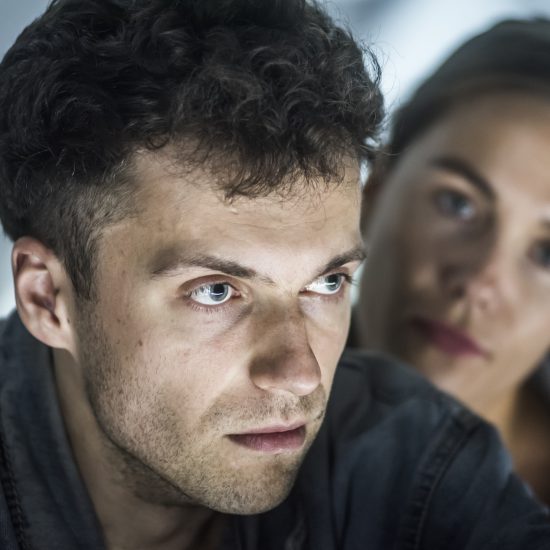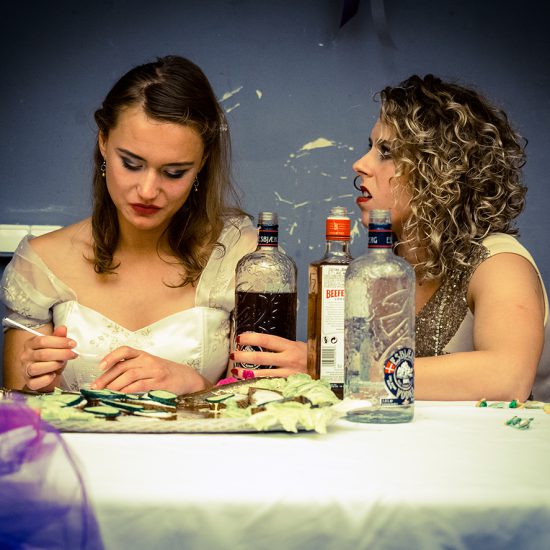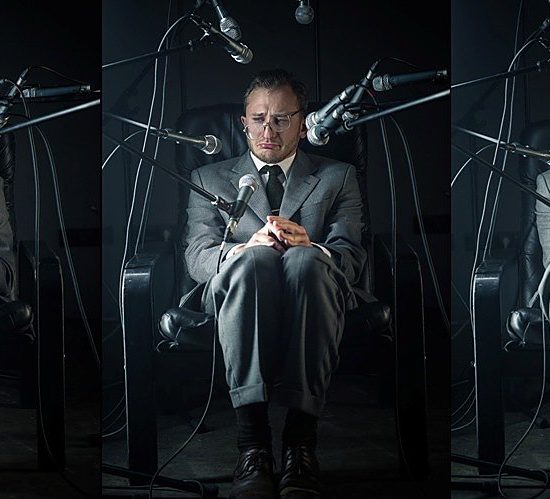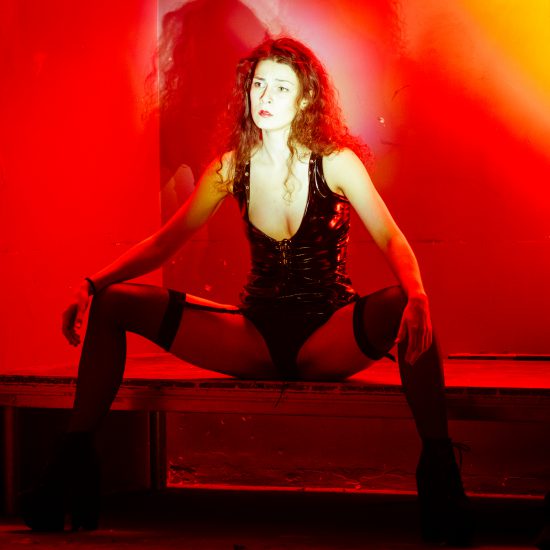Confronting the other side
More than ten years ago, Oskaras Koršunovas said that his generation “was born in one society, but began to live a completely different one.” Over the years, there appeared the term “the generation of the breakthrough” and each new production of the director seemed to manifest its existence. But what was there to manifest? A generation is formed by common values, when peers share the same views. There have to be common expectations, ideas, and problems. After the restoration of independence, it seemed that a new generation was born. Today I wouldn’t say this. Although the breakthrough did happen, the occurrence of common interests and ideas didn’t. At best, we can say that it gave rise to the formation of individual communities. The Oskaras Koršunovas Theater is one of them. …
Ever since his “P.S. Byla OK” (P.S. File OK) Koršunovas has been on the way towards his “Hamlet”. In P.S. File OK he attempted to sum up the experience of the generation. The symbolic patricide meant the new generation’s fight for new beliefs to the protagonist of the play. To Hamlet, the murder of his father brought the question “who am I?” Koršunovas’ Hamlet hopes he can remedy the “rotten state” by confronting his conscience. He also believes in making this confrontation possible with theatrical means. “the play ‘s the thing wherein I’ll catch the conscience of the king” is the motto of Hamlet, the idealist. If we admit that idealism is an outdated thing in these postmodern times, this performance by Koršunovas is not a modern performance. Therefore its relevance. The setting of the performance is rather eloquent. The director does not create Elsinore, because he knows that it would only be a sham. He needs unconditioned space expressing the present time. Empty space has been used many times, so he chooses a different way: builds a make-up room on the stage. What is left at the end of the performance is only what is left after any performance: make-up tables with mirrors, hangers with costumes, and flowers. Elsinore is created in the imagination of the audience and it disappears with the last gestures of the actors.
In the first stage of the performance, its creators give the motivation of their “Hamlet” and the key to its interpretation. Initially, we do not see the characters, just the actors. Instead of the first phrase of Shakespeare’s play “Who’s there?” they ask their images in the mirror and, through them, the audience: “Who are you?” This is the question many actors ask themselves in front of a make-up mirror after a performance. Turned into a make-up room, Elsinore reflects the present time of the viewer through the mirror of the stage. The association is especially meaningful now when acting permeates all areas of public life. Then a mirror is necessary for cleaning the make up and looking into one’s own eyes. The rhetorical question is repeated until it all shakes everybody as a high-voltage current. Its discharge leads to the creation of the characters. They are to confront their conscience as they confront their images in the mirror. But for that to happen, Hamlet has to first confront the other side…
Koršunovas is in a way disputing with Nekrošius. First of all, their interpretations of Hamlet’s role differ. Hamlet’s age is of no importance to Koršunovas, yet it played an important role in Nekrošius’ performance. The youth of Hamlet, played by Andrius Mamontovas, expressed everything that is spontaneous, irrational and natural. He was a son, a victim of his father. Darius Meškauskas’ Hamlet is not young. An eloquent detail: all the actors cast in this performance, except Nelė Savičenko’s Gertrude, are younger than Meškauskas. Neither is he charismatic, as was Mamontovas’ character. Actually, Hamlet played by Meškauskas is not very different from his environment. First, the eye catches his strange facial features – he looks like an old child… Koršunovas has said that initially he wanted to play Hamlet himself, but changed his mind. Meškauskas’ age, appearance, temperament, way of thinking show how accurate the choice was. Not only is he the director’s alter ego, but he also plays the role of Hamlet, the director.
Another important feature of Koršunovas’ interpretation of “Hamlet” is that one actor plays both the role of Claudius and that of the father’s ghost. The axis of Nekrošius’ “Hamlet” was the visually separated worlds of the father’s ghost and Claudius. They could not connect, just as iron and air – two different substances of the performance. Koršunovas separates Claudius and the father’s ghost by a single gesture of Dainius Gavenonis, the actor who plays both characters. They both are real and illusionary at the same time. Just like the ghosts of Hamlet’s imagination. <…>
One of the biggest revelations in the performance is Horatio. Traditionally, Horatio is a friend of Hamlet’s, to whom alone he can confide his story. In Nekrošius’ play, Horatio was more than a friend – he was Hamlet’s spiritual alter ego. Koršunovas interprets Horatio as a traitor and a spy for Fortinbras. Horatio, played by Julius Žalakevičius, constantly examines the environment by shining his red clown’s nose. Horatio, who pretends to be a jester, and, dressed as transvestites, Rosencrantz and Guildenstern are Hamlet’s friends made look like masks-puppets. Hamlet’s last words of the play are spoken by Horatio, who gives them a new, unexpected meaning. “The rest is silence” – smiling sarcastically he closes Hamlet’s eyes. An eloquent answer to the question about the generation.
Darius Meskauškas’ Hamlet is bound to remain lonely in his confrontation with “the other side”. He is not moved by revenge, even though Hamlet struggles to fulfill the oath he gave to father’s ghost. The strongest magnet is his imagination. Mamontovas’ Hamlet addressed the question of how to remain human in this inhuman world of Elsinore. For Meškauskas’ Hamlet, to answer the question “to be or not to be” means to transcend the limits of thought and imagination in order to experience what is the “undiscover’d country from whose bourn no traveller returns.” He can not do it alive, but his imagination prevents him from not being. He suffers seeing “with the eyes of the soul” his father’s ghost turn into Claudius in front of his eyes. Hamlet can not get rid of the idea of the imaginary disgrace of his beloved Ophelia and breaks her like a precious vessel in a fit of fury. He fights the ghosts of his imagination even when he’s surrounded only by the actors who played them… At the beginning of the performance Hamlet ponders on what is “nobler” while, in its middle he oversteps all limits and strives for the place “from whose bourn no traveller returns.” And, on his way out, he maniacally yells out the question “to be or not to be” like a proof that one cannot answer this question alive, because thinking, as well as imagination, “does make cowards of us all.” Therefore Koršunovas’ “Hamlet” is a tragedy of the imagination.
The director intentionally lures the viewer into the “mousetrap” of Hamlet’s imagination, deleting the boundaries between the theatre and Elsinore, the actor and the reality of the role. This is achieved with the help of the music by Antanas Jasenka – the high-voltage discharges of the imagination. The director leaves an original sign of Hamlet’s imagination on the stage. At the beginning of the performance, the tail and head of a huge white mouse appear from behind the make-up tables. The mask of the mouse appears many times during the whole performance, but nobody seems to notice it. What is it – a symbol of musty Elsinore or a huge mousetrap? There is no one answer, but it is clear that such an image could have originated only in the imagination of Hamlet, the director. …
The father’s ghost and Claudius are masks. The actor Dainius Gavenonis doesn’t only change them with virtuosity, but he also manages to psychologize, sometimes almost identifying himself with the role. Hamlet’s meeting with the father’s ghost is intimate. The father tells his son about his tragedy, opening up his feelings for the first time, something he didn’t do when alive. But a single motion or a costume slipped on the naked body is enough to make us see Claudius’ grimacing face in the mirror. Claudius is dual too. The Claudius left alone with his thoughts is different from the Claudius in public. The weapon of D. Gavenonis’ Claudius is his liberalism. He rules without ruling. Such interpretation of the role is very understandable, because the claudiuses of our times demonstrate political correctness rather than force. Another excellent feature of D. Gavenonis’ character is that he is able to be very convincing without uttering a word. Claudius resists Hamlet’s feverish attacks in silence. But not for long. The mask of Claudius disappears when he demands the death of Hamlet.
Polonius, played by Vaidotas Martinaitis is also a mask, but its nature is very different. The influence of commedia dell’arte on certain characters of Shakespeare’s plays is not a secret, but only few directors are able to exploit the opportunities they offer. The right actor is necessary too. Koršunovas saw Polonius as a prototype Pantalone, a famous mask of commedia dell’arte, and found the right actor to impersonate him. Martinaitis plays Polonius in the way that, possessed by fatherly love, he seems able to move heaven and earth in order to please the king. His articulate chatter, coordinated plasticity and direct relationship with the environment help Martinaitis master his character’s mask with the precision of a Swiss watch. His Polonius is the only character in the play with a clear conscience, because he openly shows all his feelings and thoughts, as if putting them on the counter. In the play, this character represents parental blindness which drives the children to destruction. This is an old theme in Koršunovas’ theater, touched on in “Fireface” and developed in “Romeo and Juliet”. Unlike in previous productions, Polonius, the embodiment of the father, remains likable till the very end. This is because, first of all, he is a performer.
Gertrude, performed by Nelė Savičenko, also wears a mask at the beginning of the play. It is a mask of indifference, which helps Gertrude to gain control of herself when she first flinches from the look of the doomed Ophelia who shines with happiness. This look will always haunt her; it is from this look that she will be hiding in Claudius’ embrace. Even her drastic conversation with her son and the confession that Hamlet “hast cleft” her “heart in twain” is not as powerful as the final confrontation with the mad Ophelia. Gertrude begins to empathize with her tragic fate and see it as her own tragedy. The actress is still looking for more genuine intonations of its expressions, and the dramatic potential of the line of Ophelia and Gertrude has not yet been fully revealed in the play.
Koršunovas assigns a special role to Ophelia. She insensibly captures the consciences of Gertrude, the King and Hamlet into the trap. The final appearance of mad Ophelia becomes the “coincidence”, determining its outcome. From the very first appearance of Rasa Samuolytė’s Ophelia, her funeral is prepared in front of the audience. A white bridal gown, seen for a brief moment in the hands Polonius, will later become her cerements, and the white artificial flowers placed in the corners of the stage will later decorate her as a grave before her conversation with Hamlet. This very conversation will determine that Ophelia, Hamlet and Laertes are destined “not to be.” This is one of the most poignant scenes of the play. Hamlet separates with Ophelia by violently rejecting her and embracing her with love at the same time. After this, no theatrical means to express Ophelia’s madness are necessary. Mad Ophelia appears in silence. The performance seems to have reached its end and the actors begin to wipe off their make-up in front of their mirrors. Ophelia goes to each of them and tries to speak to them, but all turn their eyes aside. Gertrude pours a glass of water on her face, and Hamlet screams to Laertes who is on the verge of madness: “I loved her…” and challenges him to a duel, as if wishing to punish himself with Laertes’ hands.
There are no deaths in Koršunovas’ “Hamlet”. Claudius is not killed, Laertes does not die in the duel, and only red paint is spilt over Hamlet. Only Polonius slumps on the floor after he is murdered, and, a moment later, gets up and sits down in front of the make-up mirror … Koršunovas is faithful to the principle of the theatre of the imagination. He tries to help the viewer imagine what can not be played.



